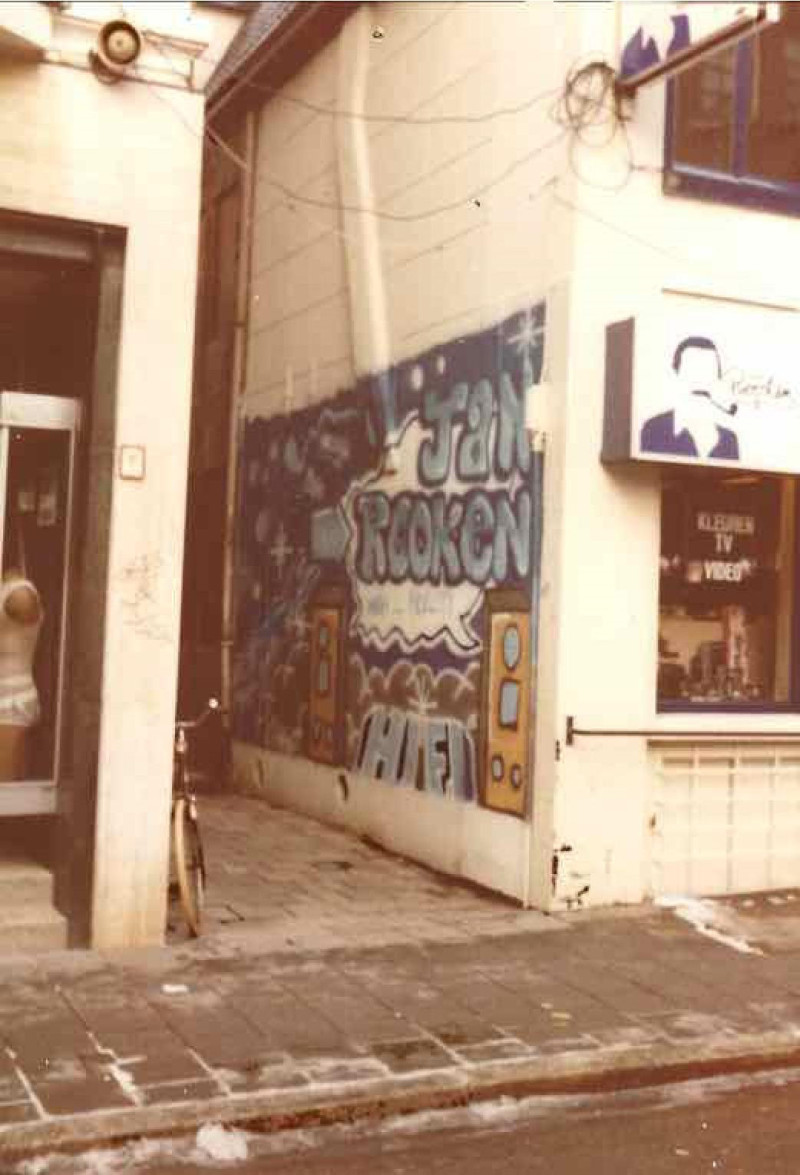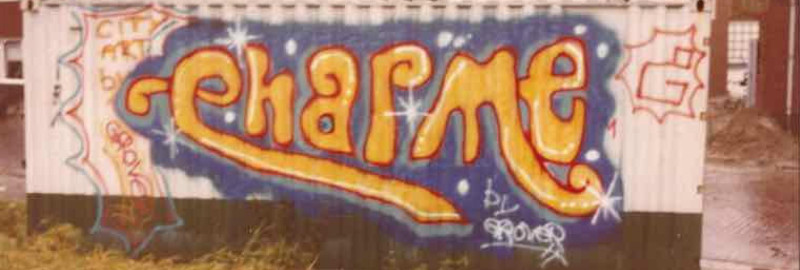
Grover
Grover (Erik Mertens), together with other fans, put his first tags as an FC Groningen supporter,: the Z-side tag. In the soccer stadium he also displayed a flag of his own making, like other supporters. His flag showed the pseudonym he chose: Grover. This photo was taken from a TV screen showing the FC Groningen against Ajax in 1983. Grover himself was sitting, of course, behind his own flag.
One of Grover's first pieces was on a shack on the Oosterhamrikkade (opposite today's Geldmaat). In his sketchbook Grover practiced making beautiful letters, and there too he created this ‘Charme’ piece. On either side are the sketchy letters GO and City Art Groningen. GO refers to Groningen East (Oost in Dutch). Together with several other writers, Grover was active in the neighborhoods De Hoogte, Indische Buurt-Korrewegwijk and Oosterpark: this was their area. City Art Groningen referred to grander plans: Grover and his followers wanted to more or less officially present themselves in order to get commissions. They even made a special letterhead for that purpose and practiced typing the letters in drafts before typing them.
At the bicycle tunnel of the Noordzeeweg, near De Hoogte, Grover made a piece with his characteristic bulldog character. This bulldog was inspired by his real dog. Most writers did not have poodles, but “dog”-like, tough dogs. Also strikingly large are the letters GO, Groningen Oost: the designation of the crew and the area where they were working.
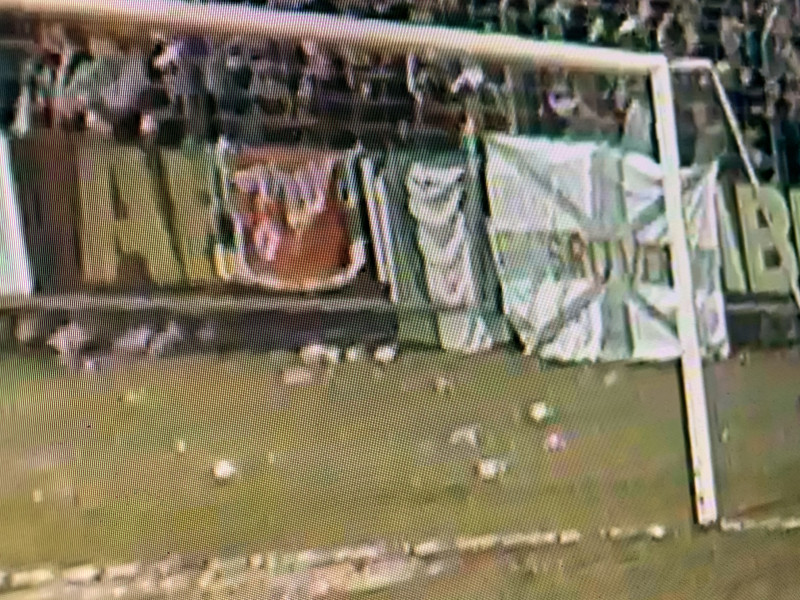
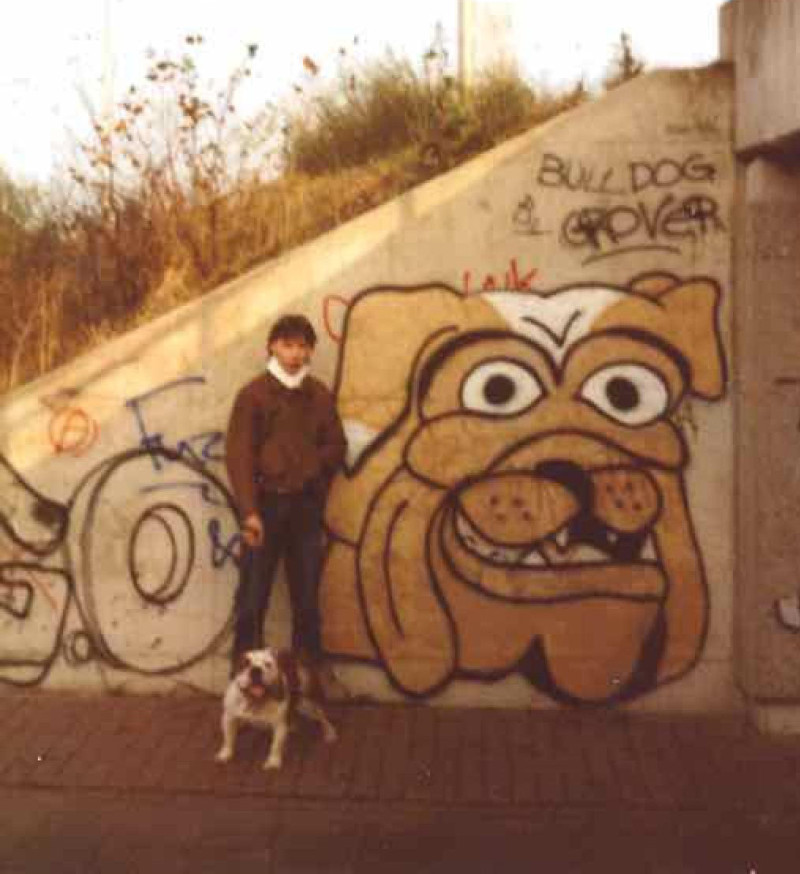
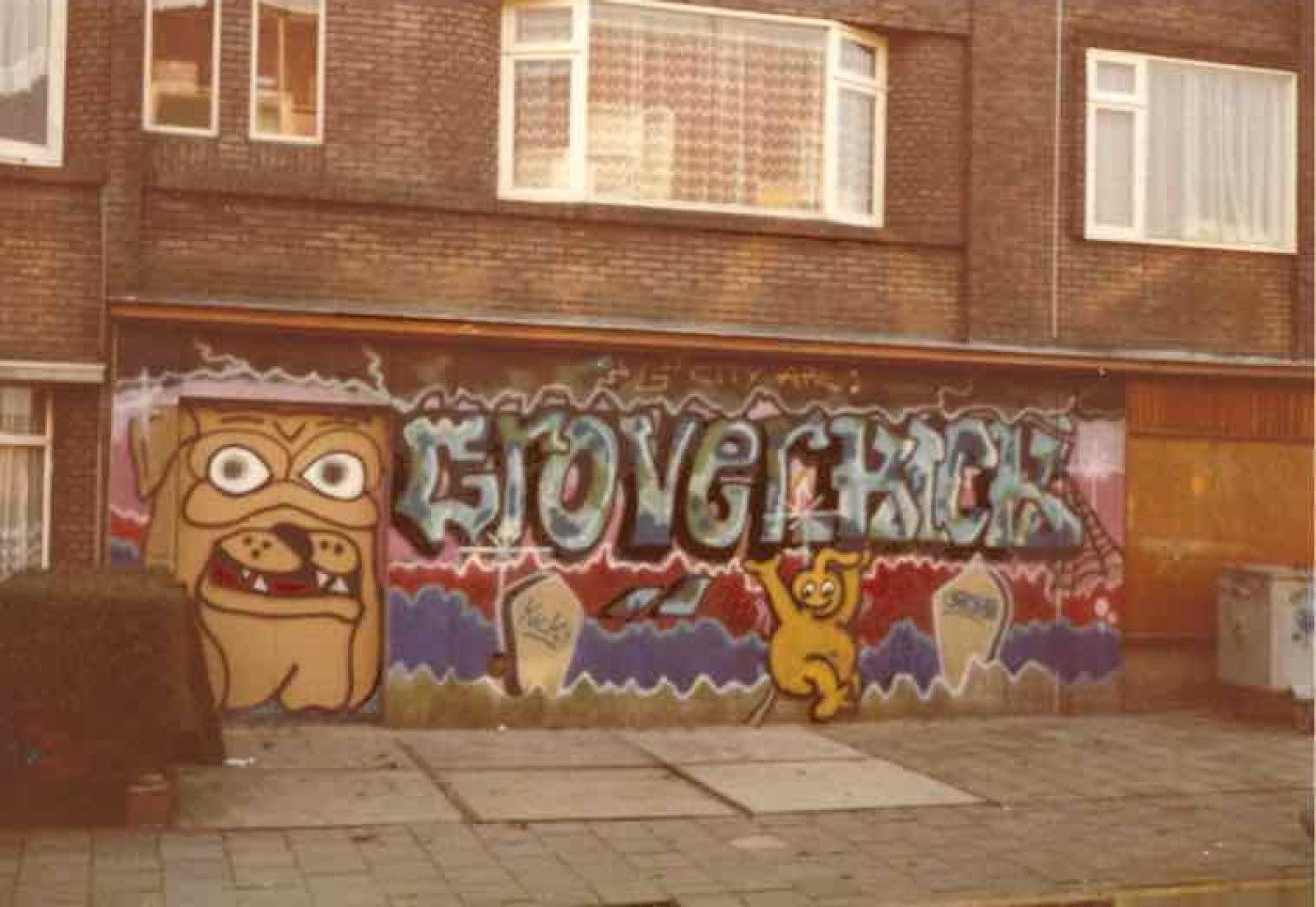
A more elaborate version of Grover’s bulldog on the corner of Oppenheimerstaat and Korreweg, in the mid-1980s; Grover made this piece together with Kick, with whom he worked a lot. A funny detail is that the dog’s eyes are the two windows in the store’s transport door, through which light shone at night. These see-throughs gave Grover the idea of spraying his bulldog around them. Above the names Grover and Kick are, again, the distinctive GO and City Art. The creators tagged their names again on top of a kind of tombstone. A funny combination with the ghostbusters figure between the tombstones, a reference to the 1984 hollywood sensation.
The Noorderbar was a darts bar on Diephuis Street near the old Noorderbad. Grover's parents were the owner of this bar and commissioned him for this piece. Pictured is a darter that Grover based on an existing English darter, called The Bully; hence the bull's head.
On the Oosterhamrikkade, near the current DOT, Grover and Kick a carefully detailed piece with their names. A similar piece did result in a visit to a police station.
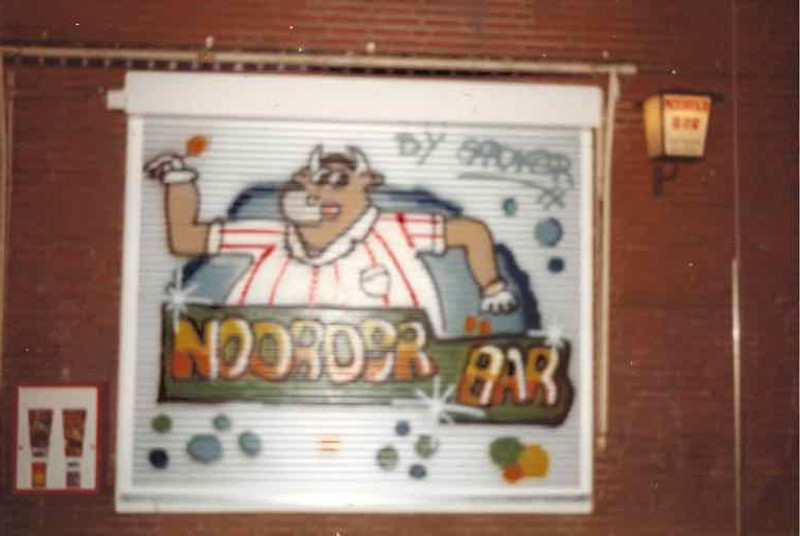
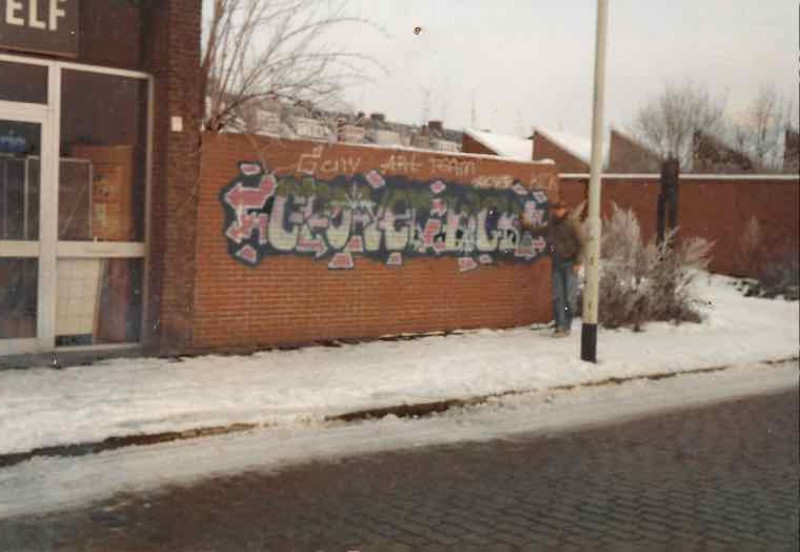
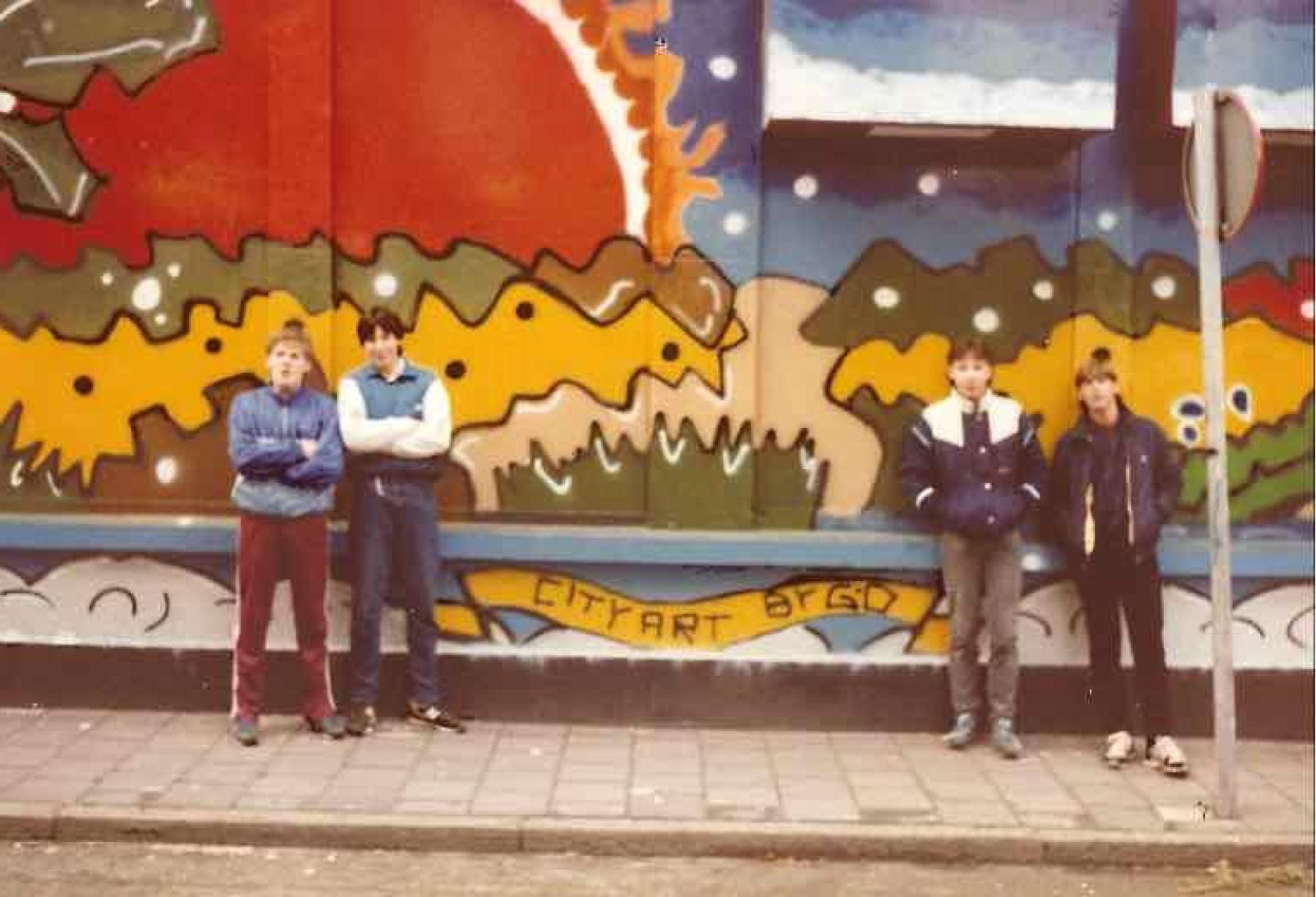
The search for commissions brought Grover and Kick, along with two more writers, Bronx and Sreby, a nice job: the facade of a dance club on Gelkingestraat. The inner city was actually the terrain of other writers. Grover and his crew made a tropical beach scene with a setting sun. Above the awnings are their names in clouds and at the bottom the trademark City Art by GO, in front of which they posed proudly. The writers worked on it for nearly two weeks.
Grover and Kick learned about bubble style letters from seeing American graffiti, for example in music videos on MTV (Rock Steady Crew) and the movie Wild style. A good example of this influence is a piece painted on commission for a school on Pelsterstraat. This piece is actually a large arrow indicating the way inside.
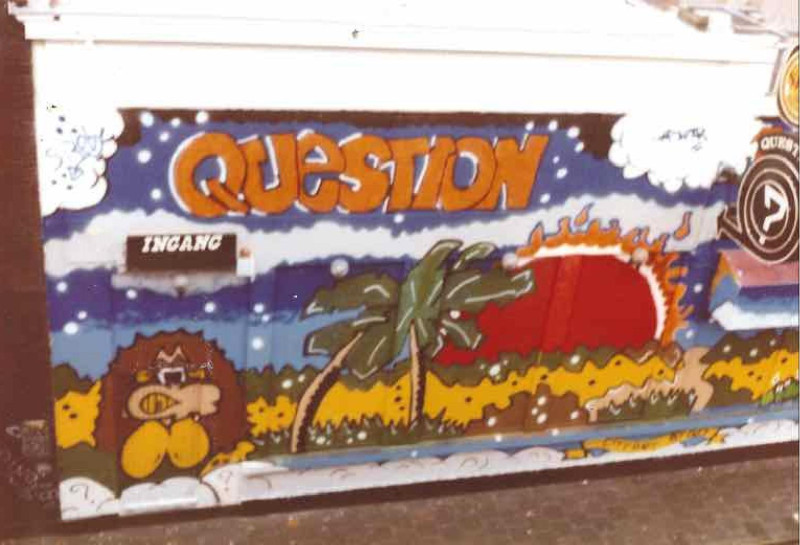
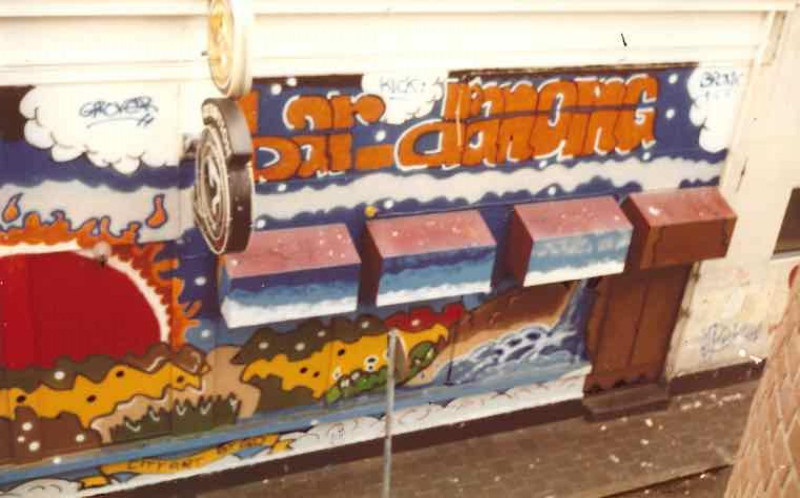

One of the highlights of the City Art crew with Grover and Kick was a side wall of Jan Rooken's electronics store. This commission came about because the owner was displeased that the side wall of his store was constantly being defaced. They then offered him to make a nice piece, which would not be painted over.
Grover started his own catering business at the age of 18. From then on, he stopped making graffiti.
